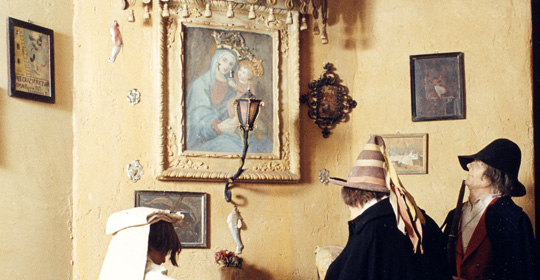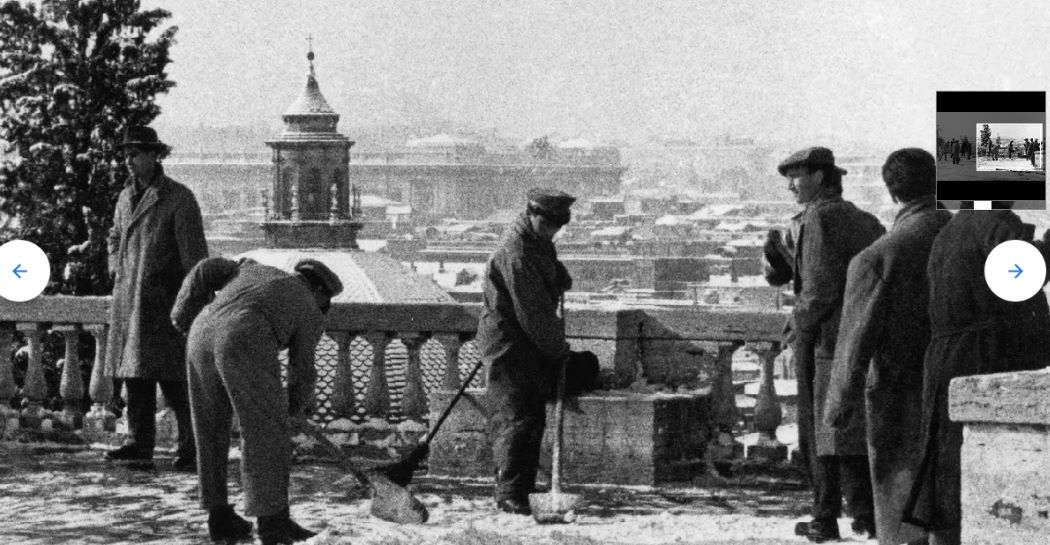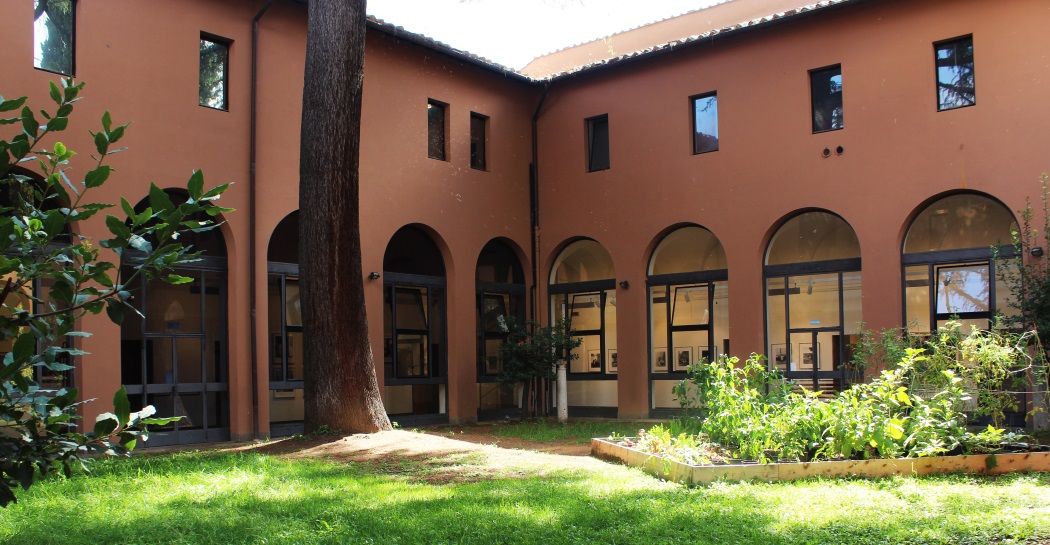Devoutness
At least up until the unification of Italy, in Rome too the principal public holidays were held according to age old traditions. They gave ceremonial status to the events of everyday family life. Christmas with its cribs highlighted birth and infancy, an engagement ring would have arrived with the "Befana", the old hag who traditionally brought gifts at the Epiphany.

On 24 June, the feast of St. John, was the date when godparenthood was confirmed (the godfather was after all also called St. John) and girls could make forecasts on their future husbands, whilst as of 2 November prayer and sacred representations in cementeries allowed for the living to make contacts in acceptable and consolatory tones with their departed. At Christmas, on 15 August (Feast of the Assumption), 8 September (the birth of Mary) and in general during Sundays in August and September it was popular devotion toward the Madonna that was to be seen at the votive shrines in the streets, at crossroads, in inns, and in shops.
In all the “Rioni” (neighbourhoods) small altars were improvised and in front of the “Madonnelle” in their votive shrines, adorned with drapes, flowers and lights – and with bay and box leaves on the pavement in front of them – litanies were sung and firework displays organised.
At Christmas the pipers’ sung prayers underlined the debt of gratitude of the devout to the Mother of God.
A sign of devotion that embraced all classes, in the Rome of the early XIX century, the votive shrines (commonly knows as Madonnelle or Altarini/Little Madonnas or Small ALtars) were for sure a means of symbolic control of the behaviour of the more restless social groups – it is not by chance that there were so many of them in the neighbourhoods of Trastevere and Monti – but also popular appropriation of significant public spaces, by means of the common denominator that was devotion to a sacred image and the protection it offered. In 1853, in a city that was still all inside the Aurelian Walls, Rufini counted as many as 2,739 votive niches, of which 1,421 dedicated to the Madonna, affixed to the walls of palaces as well as of modest buildings. The images of the Madonna considered to be especially miraculous were traditionally crowned.
The winter cycle of the religious calendar in XIX century Rome, over and above Christmas and the Epiphany, gave importance to the feast of St. Anthony Abbot on 17 January, one of the possible dates for the start to carnival, when Easter was early. It was in the Carnival period that pigs were killed, which popular iconography links to the Saint. Saint Abbot was the patron saint of heards and small domestic animals, the fertility of the pastures and brood females.
The religious calendar for spring, which had as its advance event the date of 19 March, the feast of St. Joseph with its delicious fritters, was centred upon Easter with the penitential rituals of Easter week and the imposing Corpus Domini procession. Of particular importance was the pilgrimage in honour of the Madonna del Divino Amore, the object of special veneration, as of the mind XVIII century, on the Monday after Pentecost. On 13 June there was the Feast of St. Anthony from Padua with a procession with strawberries and strawberries pickers, called fragolare.
The first feast in summer was that of Saint John, traditionally celebrated with a meal of snails, during which one sought out the best way of relating to… witches. This feast was followed – before the feasts dedicated to the Madonna during August and September – by the feast for the city’s patron saints, Peter and Paul. The celebrations in honour of the dead were the fulcrum to the autumn cycle. This range of religious feasts spanned the whole year, offering protection to the world of work and confirming social roles, year after year.






































